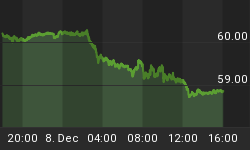I keep hearing that what is holding U.S. businesses back from expanding and hiring is "uncertainty." Exactly what new types of uncertainty businesses face in the current environment vs. past environments is rarely spelled out. But if, in fact, businesses are paralyzed due to uncertainty, I would not expect them to be stepping up their purchases of capital equipment. After all, capital equipment has a relatively long life. If businesses were unusually uncertain about the long-term outlook, they would be more reluctant to make longer-term commitments, which the purchase of capital equipment is. Rather, if businesses were unusually uncertain about the future, they might be more inclined to hire workers, who, after all, can be dismissed on short notice if conditions were to change suddenly.
But just the opposite seems to be happening. Business hiring remains weak and business capital spending is robust. The capital spending part is illustrated in the chart below showing the 8-quarter annualized growth in shipments of nondefense capital goods deflated by the PPI for capital goods. In the 8 quarters of the current economic recovery/expansion, price-adjusted shipments of nondefense capital goods have increased at an annualized rate of 7.4%. In the prior economic expansion, when, presumably, there was normal or less-than-normal uncertainty, the fastest 8-quarter annualized growth in price-adjusted shipments of nondefense capital goods was 8.6% -- in the 8 quarters ended Q1:2006. I would think that if abnormally-high business uncertainty prevailed today, there would have been considerably slower growth in price-adjusted purchases of nondefense capital goods than what has occurred.

















